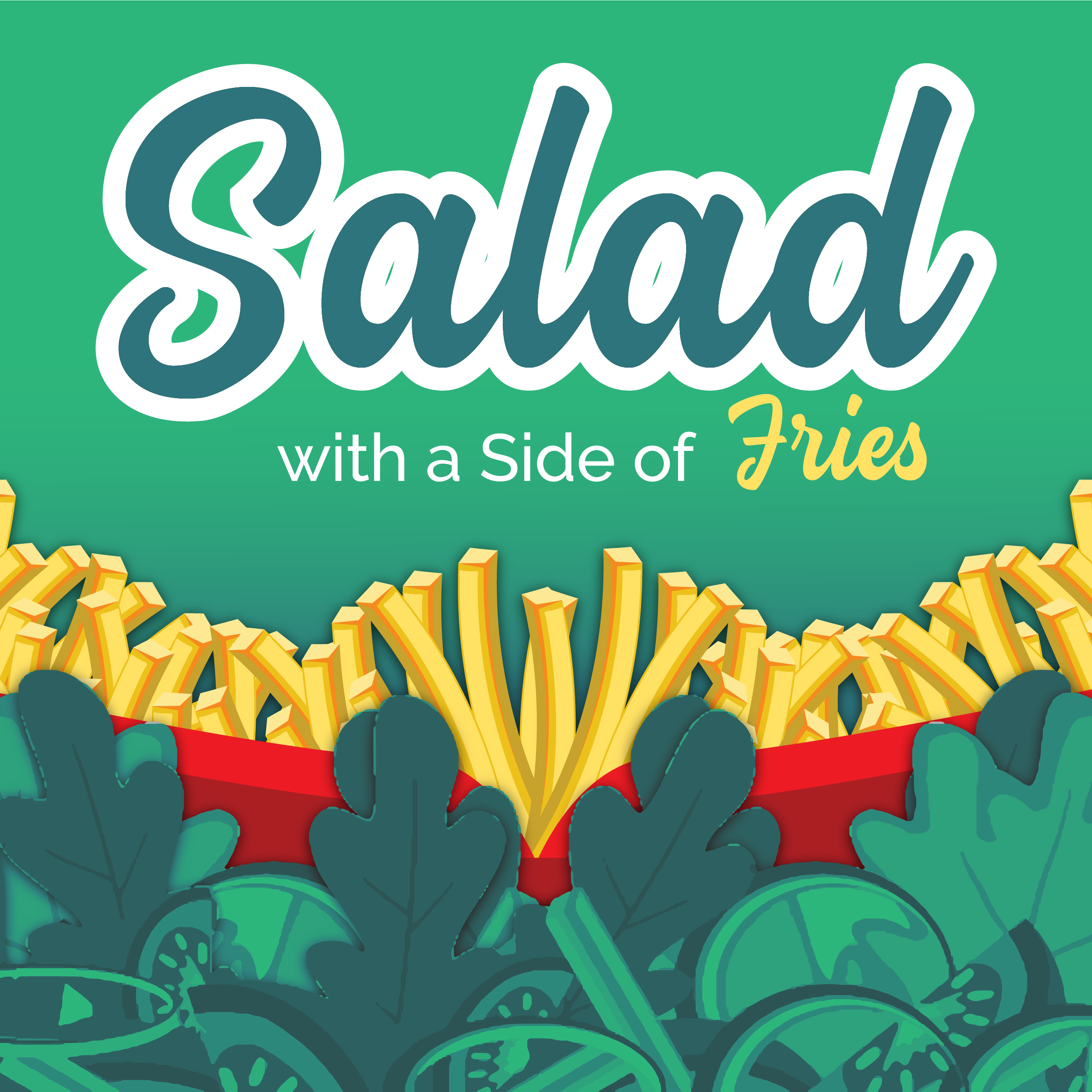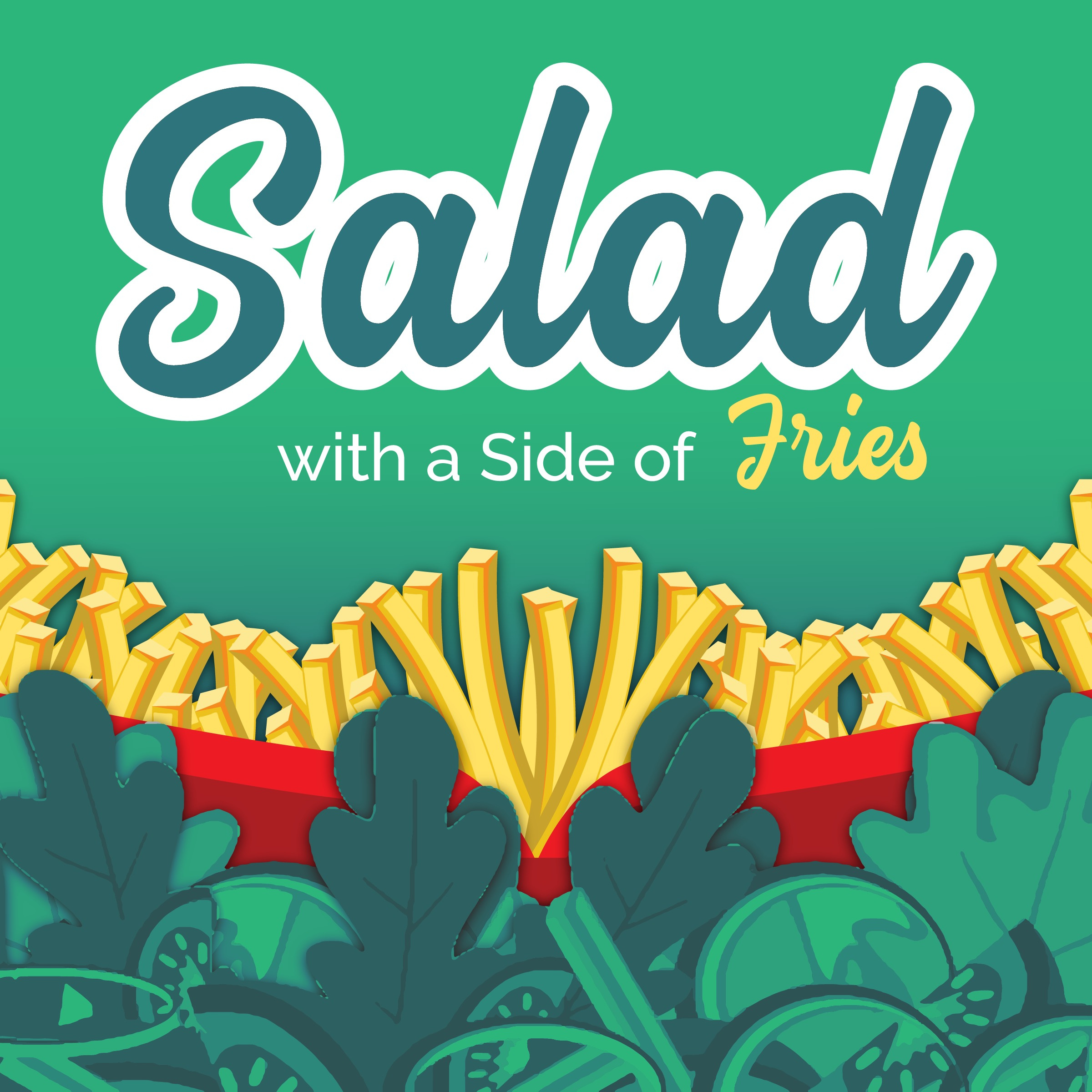bonus
Nutrition Nugget: Black Beluga Lentils
Nutrition Nugget! Bite-size bonus episodes offer tips, tricks and approachable science. This week, Jenn is talking about black beluga lentils, a superfood hiding in plain sight. Curious about this tiny legume that packs a nutritional punch? Jenn uncovers the secrets of a small but mighty ingredient that’s been a staple for centuries, offering a protein-packed, fiber-rich boost to your plate. What makes them stand out from other lentils, and how can they transform your meals? Listen to discover the tasty possibilities! Like what you're hearing? Be sure to check out the full-length episodes of new releases every Wednesday. Have an idea for a nutrition nugget? Submit it here: https://asaladwithasideoffries.com/index.php/contact/
RESOURCES:
Become a Member – A Salad With a Side of Fries
A Salad With A Side Of Fries Merch
A Salad With a Side of Fries Instagram
Keywords:
Black Beluga Lentils, Black Lentils, Nutrition Nugget, Plant-Based Protein, Gluten-Free Legumes, Mediterranean Diet, World War II, Meat Substitute, Canada Lentil Producer, Green Lentils, Brown Lentils, Red Lentils, French Lentils, Nutty Flavor, Cooking Texture, Lentil Soup, Puree Soup, Peppery Taste, High Fiber, Protein Content, Iron Source, Folate Benefits, Calcium, Potassium, Phytochemicals, Antioxidants, Weight Management, Heart Health, Blood Sugar Support, Cancer Prevention, Cholesterol Levels, Anti-Inflammatory Properties, Neuroprotective Effects, Blood Pressure, Energy Boost, Antinutrients, Trypsin Inhibitors, Lectins, Phytic Acid, Soaking Lentils, Cooking Lentils, Versatile Ingredient
Transcript
[00:00:27] So surprisingly we haven't done a nutrition nugget on lentils, you know, which surprises me because, you know, really considering how much they've grown in popularity with more and more people focusing on plants and plant sources of protein. So a little fun fact, their first rise in popularity was actually back during World War II because they were an affordable meat substitute.
[:[00:01:17] So, alright, what are these things? So lentils are little gluten-free legumes similar to others in the legume family. Like beans and peas. They grow in pods most commonly identified by color. So the most common colors are green, brown, green, red, and black. So Brown or European lentils tend to be the least expensive.
[:[00:02:08] But if you're gonna do, you know, green lentils with soup, you'd probably need to like puree the soup if you wanted it smoother. Like a split pea soup, right? A lentil soup. They tend to like hold their own pooey. And I may be butchering the name, but they come from the French region Le. I don't know. It's PUY, whatever.
[:[00:02:49] And then finally, black lentils. The focus of our conversation today. So these are the tiniest. Type, which is why they're sometimes called beluga lentils because they kind of look like [00:03:00] caviar and they are the most nutritious of all the varieties, so that's why we're focusing on them today. The black beluga lentils, so they're kind of like black beans in flavor, like pretty earthy.
[:[00:03:38] You're probably not going to have the whole thing. But anyway, so one cup. 223 calories, 0.8 grams of fat with 0.2 grams being saturated fat. They have 38.4 grams of carbs, of which it's 15.4 grams of fiber. [00:04:00] There's 3.8 grams of sugar in there from the naturally occurring sugar, and then it's 17.3 grams of protein, so almost two and a half ounces of protein and over 15 grams of fiber.
[:[00:04:35] The difference though, tends to be, you know, really proportional to this based on the serving size. So with these nutrition facts, we can think great source of plant protein and fiber, right? On the protein front, we said it's almost two and a half ounces almost. They're not a perfect protein, so it means we don't get all of the essential amino acids from them.
[:[00:05:23] Often we think of the color of foods giving us different phytochemicals. So with the black beluga lentils, similar to what we learned about with black rice, right? They're high in phytochemicals and antioxidants. So with all of this combined, we see research supporting lentils for weight management, right?
[:[00:06:01] There's also research connecting proin and flavonol. So these are antioxidants found in lentils. They have anti-inflammatory properties and neuroprotective effects in addition to cholesterol. The potassium and lentil supports normal blood pressure levels. We also know folate. The B vitamin protects the heart and supports formation of red blood cells.
[:[00:06:48] And because of the iron, some people will notice more energy with lentils than other plant protein sources. Here's the thing though. Be careful how much you have and how you [00:07:00] make them. So eating too many or too much, whatever may cause cramping and gas, of course. We know that we want to slowly increase our fiber intake so that can help you tolerate more of the lentils.
[:[00:07:40] So let's look at a couple for a second that are in lentils. So lentils contain trypsin inhibitors. So trypsin inhibitors block the body's production of an enzyme that breaks down protein from food that we eat. The amount of trypsin inhibitors in lentils seems to be relatively low, so therefore [00:08:00] unlikely to really have a major impact.
[:[00:08:27] If you have a lot of lectins, it could potentially impair the gut barrier, which then has a whole host of implications, right? Like. Autoimmune, leaky gut, things like that, so just worth noting. On the other hand though, lectins may also have anti-cancer and antibacterial properties. Lentils contain tannins, so tannins also bind to proteins and prevent ideal or optimal absorption.
[:[00:09:15] It doesn't mean that we need to avoid lentils specifically, right? We're talking about black beluga lentils today. So soaking them overnight if you want, and then cooking them decreases the anti nutrient impact. Right. So do both or frankly, I mean, a lot of times you're probably fine with just rinsing the lentils so that they don't have dirt on them, and then cooking them, but cooking and if you want the added anti nutrient impact, you could soak them also.
[:[00:10:17] And then on the stove top, black lentils are gonna take about 25 to 35 minutes. What's great though is that you can really make a batch and then have 'em in the fridge. You can add them to salads or other veggies, use them as a base for a salad instead of pasta. If you wanted something like that. You could use them and puree them into a dip or to thicken a sauce, and cold ones make a soup, right?
[:[00:11:07] It seems like there isn't enough liquid. Just add more water, it's gonna be fine. How do you know when they're done? You want them to be soft, but slightly crunchy like they have a texture, right? Unless, if you really wanna like cook 'em to smithereens and puree them or something for a soup, you could do that.
[:[00:11:55] And I think you know, the reminder here is that these were instructions. The [00:12:00] timing was really for black lentils. That's the most nutritious variety why we're focusing on them. If you have other kinds of lentils, either check the internet or follow the instructions on the package. Like just for reference split red lentils can cook in like five minutes.
[:[00:12:36] They're truly a fantastic way to add variety to your plate and some plant-based protein. Well, as always, everybody, I'm your host, gen Trebeck. Connect with me on Instagram or all social media. I'm at Gen Tpic, J-E-N-N-T-R-E-P-E-C-K. Website is a salad with the side of fries.com. Pick your platform, send a message hearing from you is the highlight of my [00:13:00] day, your key takeaways, your ideas, your questions.
[:[00:13:30] Well, friends, that's it for today's episode of Salad with a Side of Fries. Congratulations for making yourself and your health a priority. Thanks so much for joining us. Be sure to click subscribe or follow on your favorite podcast platform. Share us with a friend and we'll be back next week. Always remember you deserve it and you are worth it.
[:

